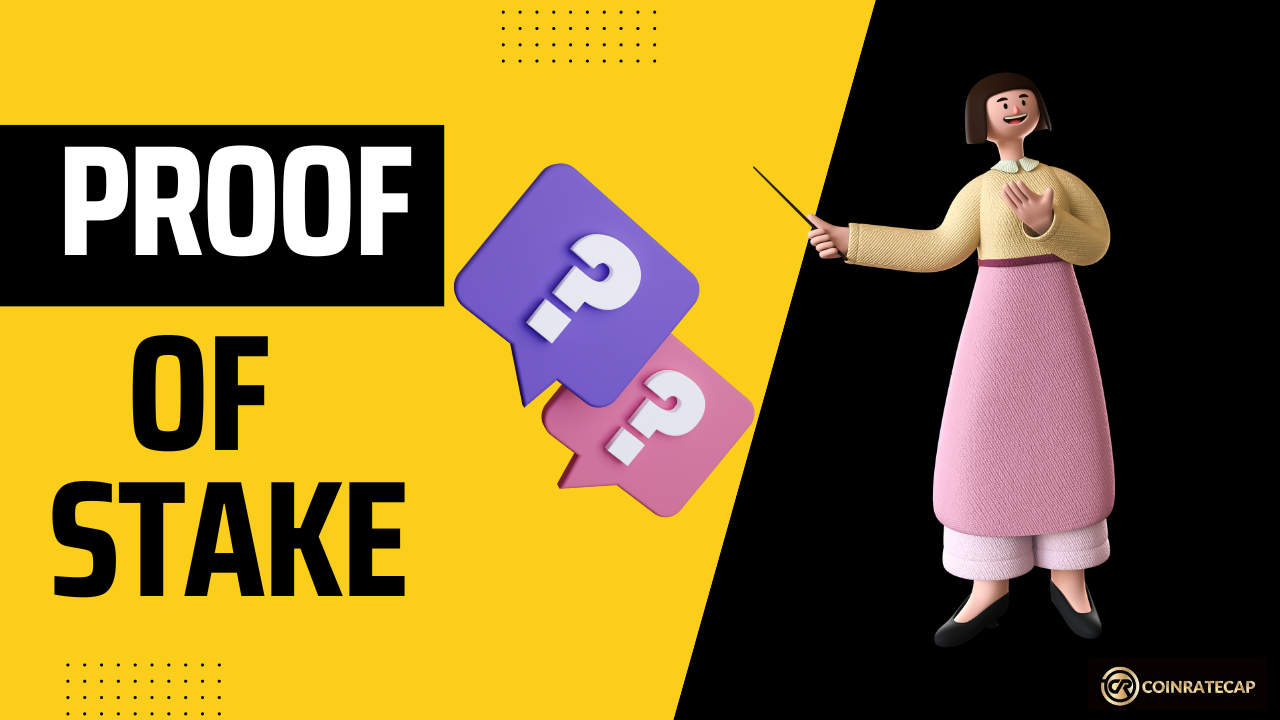
Cryptocurrencies require a method of transaction
verification because they are decentralized and independent of financial
institutions. Proof-of-Stake (PoS) is one method that many cryptos employ.
What is Proof-of-Stake?
Proof-of-Stake or PoS is a consensus
mechanism for processing transactions and adding new blocks to a blockchain. A
consensus mechanism is a technique used to secure a distributed database and
validate entries into the database. The database is known as a blockchain in
the context of cryptocurrencies. So, the blockchain is secured by the consensus
mechanism.
Proof-of-Stake is an alternative to
Proof-of-Work (PoW) which is the first consensus mechanism created for
cryptocurrencies. PoS has gotten more popular since it is much more
energy-efficient as attention has shifted to how the planet is affected by
crypto mining.
How Is Proof-of-Stake
Different from Proof-of-Work?
Both PoS and PoW are consensus
mechanisms that help blockchains process transactions, validate information,
and synchronize data.
There are advantages and disadvantages to each approach, but they have
all been successful at maintaining blockchains. However, both algorithms, take
very different approaches.
Block creators are known as
validators under PoS. A validator examines transactions, confirms activity,
keeps records, and votes on outcomes. The creators are called miners under PoW.
Miners solve difficult mathematical problems to validate transactions.
Investors only need to buy the sufficient
limits of tokens or coins necessary to join a PoS blockchain as a validator to
"buy into" the position of a block creator. For PoW, miners must invest
in processing equipment and pay high energy costs to run the machines that are
attempting to solve the computations.
PoW mining requires expensive energy
and equipment, which restricts who can mine and increases the blockchain's security. However,
because of their energy efficiency, PoS blockchains frequently permit greater
scalability.
How Does Proof-of-Stake
Work?
The Proof-of-Stake model enables
cryptocurrency owners to stake their coins and establish their validator nodes.
Staking is the act of pledging your coins to be used in transaction verification.
Once you stake, your coins are locked up. However, you can un-stake your coins
if you want to use them for trade.
The PoS protocol of the
cryptocurrency will select a validator node to review the block when a block
transaction is ready to be processed. The validator verifies the accuracy of
the transactions in the block. If the information is accurate, they add the
block to the blockchain and receive crypto rewards for their contribution.
However, validator incurs a loss of staked holdings if they propose adding a
block with inaccurate information.
As an example, let’s take a look at
Cardano (ADA) a major cryptocurrency that uses PoS. Any Cardano owner can stake
it and create their validator node. Cardano's Ouroboros protocol chooses a
validator when blocks of transactions need to be verified. The validator
verifies the block, adds it, and is compensated with more Cardano.
Some of the other most popular coins
using Proof-of-Stake include:
·
Tron (TRX)
·
EOS (EOS)
·
Cosmos (ATOM)
·
Tezos (XTC)
Pros of
Proof-of-Stake
· Does not
require specialized equipment
·
Provides inexpensive and fast transaction processing
·
Energy efficient
Cons of
Proof-of-Stake
·
Keeping staked funds locked up for a set period is
necessary for some Proof-of-Stake cryptocurrencies
·
Transaction verification may be overly influenced by
validators with substantial holdings
·
In comparison to Proof-of-Work, its security is not
proven
Conclusion
Proof-of-Stake is beneficial for
users of cryptocurrencies as well as for investors because of how it works. The
ability to process transactions quickly and cheaply is essential for
scalability, and PoS-based cryptocurrencies excel in this area. Investors can
stake their cryptocurrency to earn rewards, creating a passive income stream.
Cryptocurrencies require a method of transaction verification because they are decentralized and independent of financial institutions. Proof-of-Stake (PoS) is one method that many cryptos employ.

Written by Sam